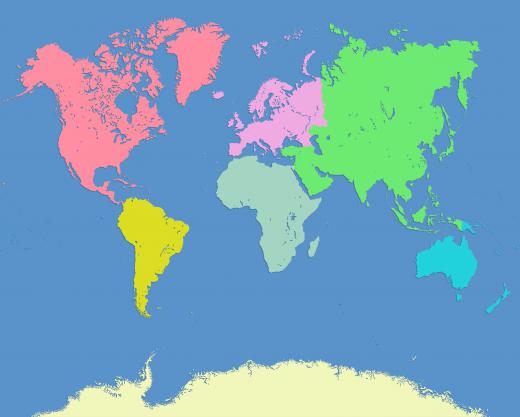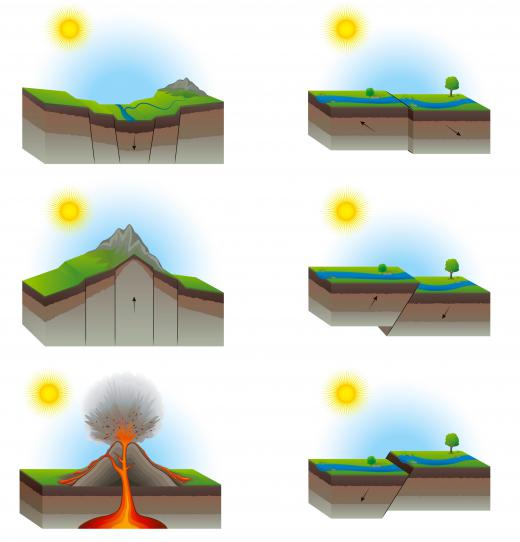What is Seafloor Spreading?
 Michael Anissimov
Michael Anissimov
Seafloor spreading is a constant geologic phenomenon and a primary driver of continental drift. The process begins when the crust is heated from beneath by upwelling in the mantle, sometimes called a mantle plume. This creates a three-armed rift called a triple junction, usually with each rift at a 120° angle to the rest. The crust along the length of the rift is heated by the underlying mantle, becoming more plastic and less dense. The crust rises, creating a broad dome and widening the rift.
The heated region pushes the crust outwards from the rift ever so slightly, at a rate of 5-10 cm a year, about the same speed fingernails grow, causing the seafloor spreading. Over millions of years, this process drives continental drift, bringing together continents, then dividing them, in a process called the supercontinent cycle. This process runs its course every 250 to 500 million years. The last time there was a supercontinent, Pangaea, was about 200 million years ago. Within the next 200 million years, the world's continents are predicted to agglomerate again, in a new supercontinent called Pangaea Ultima.

In a typical rift system, two of the rifts will continue spreading while one, a "failed rift," stops spreading. If on land, the failed rift will become a rift valley. Rifts that keep spreading are guaranteed to create an ocean, even if they begin on land. The Atlantic Ocean was created when a rift opened between the continents of North America, Africa, and Europe. This rift still exists today, in the form of the Mid-Atlantic Rift, one of the major submarine mountain ranges on Earth.

As seafloor spreading continues, magma rushes up to fill the gap, creating volcanoes and mountains. Rifts are the site of geological activity, including earthquakes. Many of the world's hydrothermal vents are found on or near the rifts that cause seafloor spreading.
When a new rift starts to spread on land, water will rush in, creating a sea. This can be seen in the Red Sea, which separates Eurasia — Saudi Arabia — from Africa — Egypt, Sudan, and Ethiopia. Over millions of years, this rift will continue to spread, creating a new ocean.
Seafloor spreading pushes the margins of oceanic tectonic plates beneath the continental plates, which are lighter. This crust is subducted into the mantle, where it melts and becomes magma. In this fashion, the ocean crust is constantly replenished. The oldest seafloor crust is only about 200 million years old, in contrast to the continental crust, which can be billions of years old.
AS FEATURED ON:
AS FEATURED ON:












Discussion Comments
In response to irontoenail's "guess that is why we find ancient seashells in dry mountain ranges." I might agree with your logic. Then if the world was once completely under water, these discoveries of sea shells, fish fossil, and creatures not natural to a given area on the globe might just as easily or more likely fossilized where they landed when the waters subsided. --Drj
It is so strange to imagine that the ground under our feet is shifting in this way.
It's also weird that the sea floor is so young. I guess that's why sometimes you can find ancient seashells in dry mountain ranges.
Just one more wonder in our world to contemplate.
Oh, what an interesting article. Nice explanation.
Post your comments